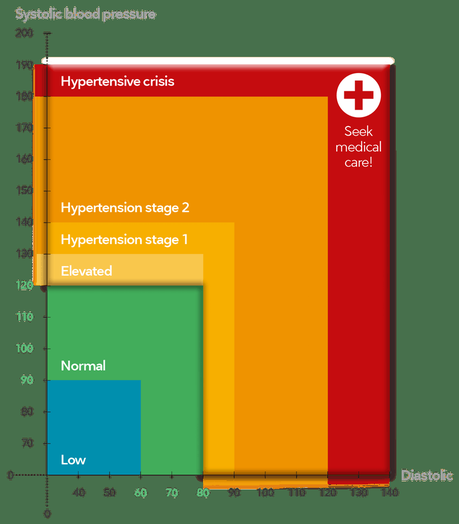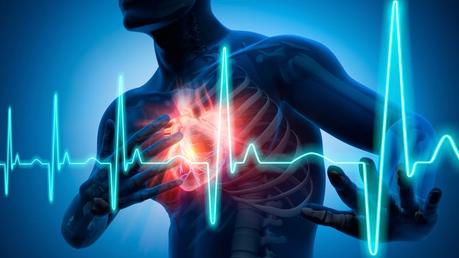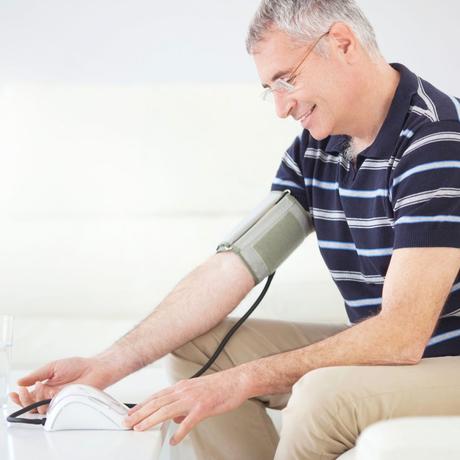Do you have high blood pressure? If you do, you are not alone. An estimated 1.4 billion people in the world have blood pressure that is too high. In North America and Europe it affects one in every three people. Just like obesity and diabetes, rates of high blood pressure have been climbing in all regions of the world over the last four decades.
Having high blood pressure, called hypertension by doctors, puts you at much higher risk of heart attacks and strokes, as well as other serious health issues like congestive heart failure, kidney disease, eye damage, and dementia.
In the US, high blood pressure is now the primary or contributing cause to an estimated 1,100 deaths every single day. World-wide, hypertension contributes to an estimated 10 million premature deaths each year, mostly through heart attacks and strokes.
But here is the good news: you can reduce high blood pressure with simple lifestyle changes. If those changes are not enough, high blood pressure medications may help.
This in-depth guide tells you what you need to know about high blood pressure.
It is part of a series of Diet Doctor guides all about blood pressure issues. This guide is for people with a confirmed high blood pressure diagnosis. Check out the companion guides, and especially note the introductory blood pressure guide as it details what blood pressure is and how to measure blood pressure accurately, including issues that can lead to inaccurate measurements.
1. What is high blood pressure?
The name says it all: high blood pressure is blood that that is flowing through your arteries at higher than normal pressures.
As your heart beats or contracts, it ejects blood to circulate it through the body. Each beat of the heart causes a strong whoosh of blood, like a pump being squeezed.
The upper number in your blood pressure (the systolic) is the pressure of blood on the artery wall as the heart contracts. The lower number (the diastolic) is the pressure on the artery wall between the beats or when the heart relaxes. (To remember systolic and diastolic think of the first letters as "sky" and "dirt.")
The two numbers of your blood pressure are written as a fraction, such as 140/92 and read out as "140 over 92."
Everyone's blood pressure fluctuates throughout the day, usually rising in the morning until its highest point in late afternoon, then falling over night.
Blood pressure can also rise with exercise, stress, anxiety, fear, agitation and other strong emotions. Even holding your breath can raise your blood pressure a few points. Your blood pressure will never be exactly the same from one reading to the next. What is most important is the general range of readings and how much they fluctuate.
High blood pressure, however, means consistent readings above the normal range of 120/80.
2. High blood pressure chart and numbers
As can be seen from this blood pressure chart, high blood pressure is now classified into different stages.

- Elevated (light yellow on graph): This is blood pressure that is slightly higher than normal, sometimes called pre-hypertension. The systolic pressure is between 120 and 129 and the diastolic is below 80. It does not need to be medicated, but it can be lowered by lifestyle changes.
- Stage 1 (light orange on graph): Blood pressure that is consistently between 130 to 139 systolic or 80 to 89 diastolic is called Stage 1 hypertension or mild hypertension. Lifestyle changes are often very successful in normalizing Stage 1 hypertension. If blood pressure continues to rise over time in spite of lifestyle changes, medication may be recommended.
- Hypertensive crisis: If a blood pressure reading is ever higher than 180 systolic and/or 120 diastolic this is an emergency. You need to see your doctor or go to your local hospital right away. Pressure this high can be life-threatening and can rapidly damage delicate tissues in your organs, especially in your heart, lungs, brain, kidneys and eyes. Fortunately, a hypertensive crisis is relatively rare and impacts only about 1 to 2% of people with high blood pressure.However, research suggests that up to 25% of people who are diagnosed each year with hypertensive crisis did not know they had high blood pressure at all.
3. What are the symptoms of high blood pressure?
High blood pressure is called the silent killer because most people with elevated, stage 1 or stage 2 hypertension have no outward symptoms at all. Nada. Not one!
The only way high blood pressure is usually found is by regular blood pressure checks. Your doctor should check your blood pressure at a minimum every year at your annual visit. Accurate public blood pressure monitors are often found in places like pharmacies, gyms and community centers, especially in North America. A home monitor is also an affordable, automatic and accurate way to keep tabs on your blood pressure.
If you check your blood pressure regularly you will know if you are trending towards higher pressures or if your lifestyle changes or medications are lowering your measurements or keeping your blood pressure in healthy ranges.
Symptoms of hypertensive crisis
While stage 1 and stage 2 hypertension do not have outward symptoms, a hypertensive crisis can have symptoms. This can be any of the following:
- headache
- blurry or distorted vision
- dizziness
- nausea or vomiting
- shortness of breath
- nose bleeds
- chest pain
- irregular heartbeats
Again, a hypertensive crisis with blood pressure above 180/120 is a medical emergency. Seek immediate medical care.
4. What causes high blood pressure?
Scientists don't know why high blood pressure occurs in some people and not in others. In fact, 95% of high blood pressure cases have no direct, discernible cause. This is called primary, or essential, hypertension. (When there is a clear cause, it is called secondary hypertension - see below.)
With primary hypertension, it is known that a number of risk factors predispose individuals to having high blood pressure. These risk factors include obesity, sedentary lifestyle, high levels of alcohol consumption, smoking, stress, family history and certain ethnicities.
Not everyone with these common risk factors will develop high blood pressure, but these conditions are associated with a higher risk of having a diagnosis of hypertension.
African Americans at higher risk
If you have African genetic heritage, especially if you live in the US, your risk of having high blood pressure as you age is much higher than other ethnicities. The reason why is hotly debated. Is it largely a genetic difference, such as in the way salt is handled by the body? Or is it more a result of socio-economic factors or racial inequality leading to issues like stress, poor diet, or reduced access to medical care? Or could it be a number of linked genetic, societal and environmental causes?
Scientific research does not know why. However, the difference is real. A recent study found that 75% of African-American men and women had high blood pressure by age 55, compared to only 50% of Caucasian men and 40% of Caucasian women.In the US, African Americans are two times more likely to die of a stroke and five times more likely to develop end-stage kidney disease from high blood pressure. That means lifestyle changes and the right medications are especially important for African Americans.
Blood pressure increases with age
Increasing age is also a risk factor for high blood pressure for everyone. As we age, our blood vessels stiffen and become less elastic. This can increase the pressure in the arteries.
It is debated, however, whether high blood pressure in the elderly, especially those over age 80, needs to have the same aggressive treatment to lower it back into normal ranges. That is because the use of high blood pressure medications can have risky side effects, such as dizziness and hip-breaking falls, especially in those who are frail and old. This higher risk of drug side effects may come without much benefit in reducing the number of heart attacks, strokes, or premature deaths, so if you are older, a careful discussion with your doctor is needed.
One recent trial, called the SPRINT Trial, did show a small overall mortality benefit in the elderly who were aggressively treated for hypertension, but it came along with increased risk of hypotension, falls, and kidney disease.
Even though we don't have scientific data to prove it yet, it makes sense that lifestyle changes in the elderly, such as adopting a low-carb diet, may still work to lower blood pressure and cause fewer side effects than medications. More studies are needed in this area so that we can confirm this impression.
However, promising-but-early research by Dr. David Unwin and colleagues shows that a low-carb diet appears to be effective at lowering blood pressure across a wide range of ages, among patients with hypertension and insulin resistance in primary care practice.
Secondary causes of hypertension
In some cases - less than 10% - high blood pressure is caused by a distinct, treatable or reversible factor such as an illness, a medication, a rare hormone-secreting tumor, or another substance. This is called secondary hypertension.
If you are diagnosed with high blood pressure, especially if you are under the age of 30, or if your blood pressure increases rapidly with no previous indication that your blood pressure was trending higher, you and your doctor should closely examine whether the sudden rise might be caused by a reversible factor.
The following are the most common causes of secondary hypertension:
- Medications: a number of prescriptions and over-the-counter drugs have side effects that include increasing blood pressure. These include:
- Oral contraceptives and hormone replacement therapy, especially with higher estrogen levels.
- Oral decongestants found in some cold and allergy medications.
- Non-steroidal anti-inflammatories (NSAIDs) for pain relief and inflammation.
- Stimulant drugs used to treat Attention Deficit Hyperactivity Disorder (ADHD), especially mixed amphetamine salts (Adderall).
If you have a sudden diagnosis of high blood pressure, rule out any possible underlying health conditions with your doctor and review with your pharmacist all medications, supplements, and other products you may be using that may have contributed to this unexpected rise.

6. Why high blood pressure is dangerous
If high blood pressure has no symptoms and no known cause, why do we care so much about lowering it? Because it silently causes significant damage.
Just as too much water pressure in a garden hose can weaken the walls of the hose and the spray can be too strong when blasted on delicate plants, blood flowing through our arteries under too much pressure can weaken and damage blood vessel walls, or damage the delicate organ structures and tissues that receive the high-pressure flow. The longer blood pressure stays high, the more damage it can cause.
Uncontrolled high blood pressure over time can predispose us to any of the following:
7. Next steps
No doubt about it, high blood pressure is a significant cause of disease, illness and death. It truly is important to do what you can to bring it back into normal ranges.
Cut the carbs, control the pressure
Reducing the sugar and carbohydrates in your diet is emerging as a powerful, effective way of lowering your blood pressure. In fact, while high salt consumption has often been blamed for the epidemic of hypertension, some experts believe that the high sugar consumption in our diet - and carbohydrate foods that rapidly digest to sugar - may be a larger issue.
Many individuals who adopt a low-carb or ketogenic diet see a rapid reduction in blood pressure. The Virta study of cardiovascular disease markers found that diastolic blood pressure measurements dropped significantly in participants and 11.5% were able to stop high blood pressure medications.
Doctors who practice low-carb medicine need to know that this result is common, so they can anticipate blood pressure falling and take extra care to monitor blood pressure and adjust patients' blood pressure medications where needed. Some patients are even able to eliminate blood pressure medications completely.
Why does it work? Research is still preliminary, but a number of mechanisms are theorized: weight loss, lower levels of circulating insulin, reduced insulin resistance, improved insulin sensitivity, reduction in salt restriction, lowered blood sugar, and more.
Diet Doctor has many guides and resources to get you started on a low-carb or ketogenic diet. Check out these two beginner guides.
8. Other lifestyle modifications
Several other lifestyle changes are effective for bringing blood pressure down. These include adding moderate exercise, reducing alcohol, managing stress and quitting smoking.
Check out our in-depth guide about how to normalize your blood pressure naturally. It explains in more detail why a low-carb diet can be so effective at addressing high blood pressure, plus easy ways to incorporate lifestyle changes into your routines for better blood pressure control.

Medications work, too
Sometimes lifestyle changes are not enough to bring your blood pressure back into healthy ranges. In that case, you will need to take blood pressure medication. Sometimes a single drug can do the trick, or it may take a combination of drugs.
Our in-depth guide on common high blood pressure medications is coming soon. It goes through how blood pressure medications work and their risks and benefits. The guide will also detail what you need to know about working with your doctor to adjust blood pressure medications on a low-carb diet.
In short, while a high blood pressure diagnosis is a serious condition not to be taken lightly, you can take many actions today to improve your blood pressure readings right away and safeguard your health for the future.
Did you enjoy this guide?
We hope so. We want to take this opportunity to mention that Diet Doctor takes no money from ads, industry or product sales. Our revenues come solely from members who want to support our purpose of empowering people everywhere to dramatically improve their health.
Will you consider joining us as a member as we pursue our mission to make low-carb simple?

